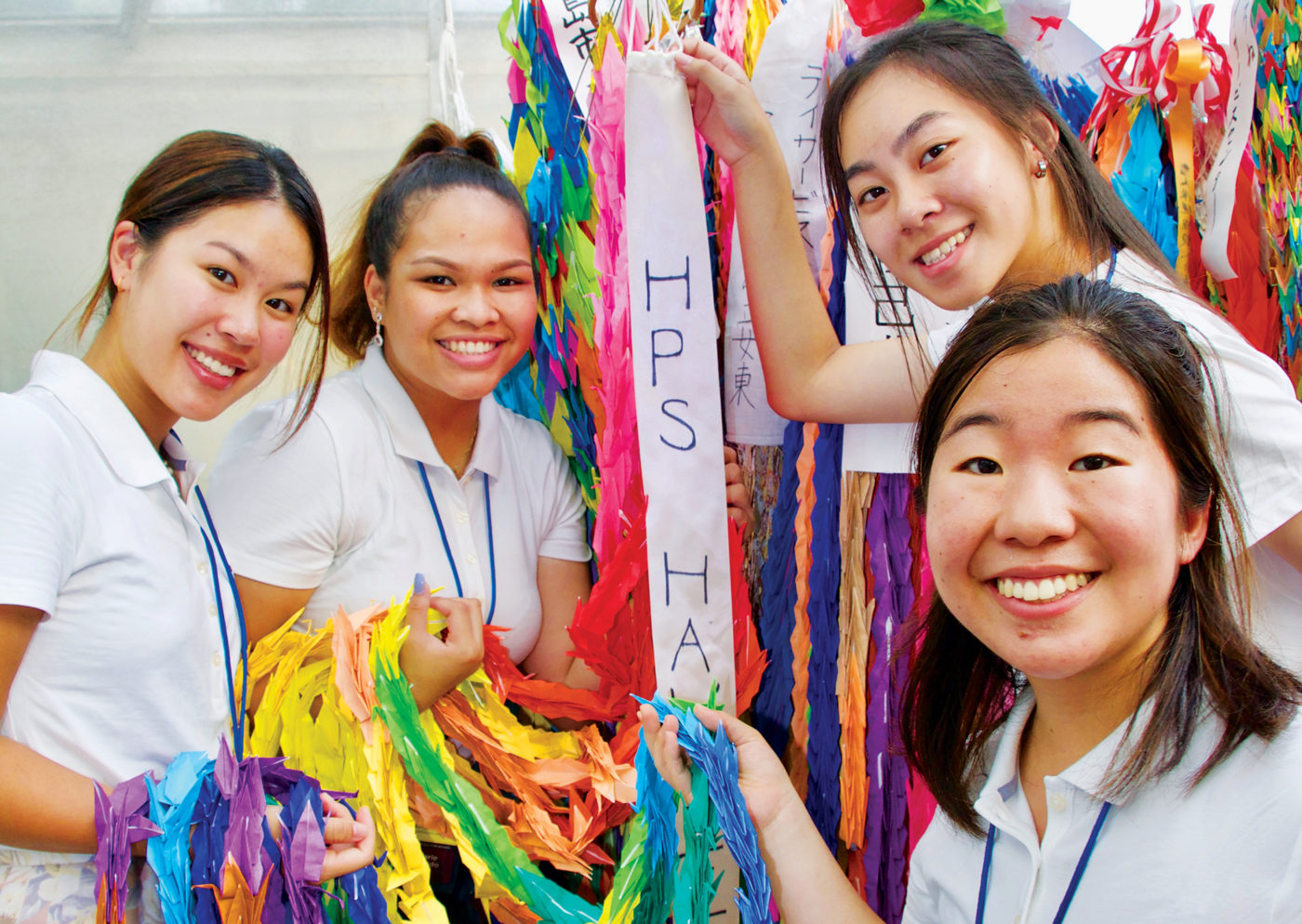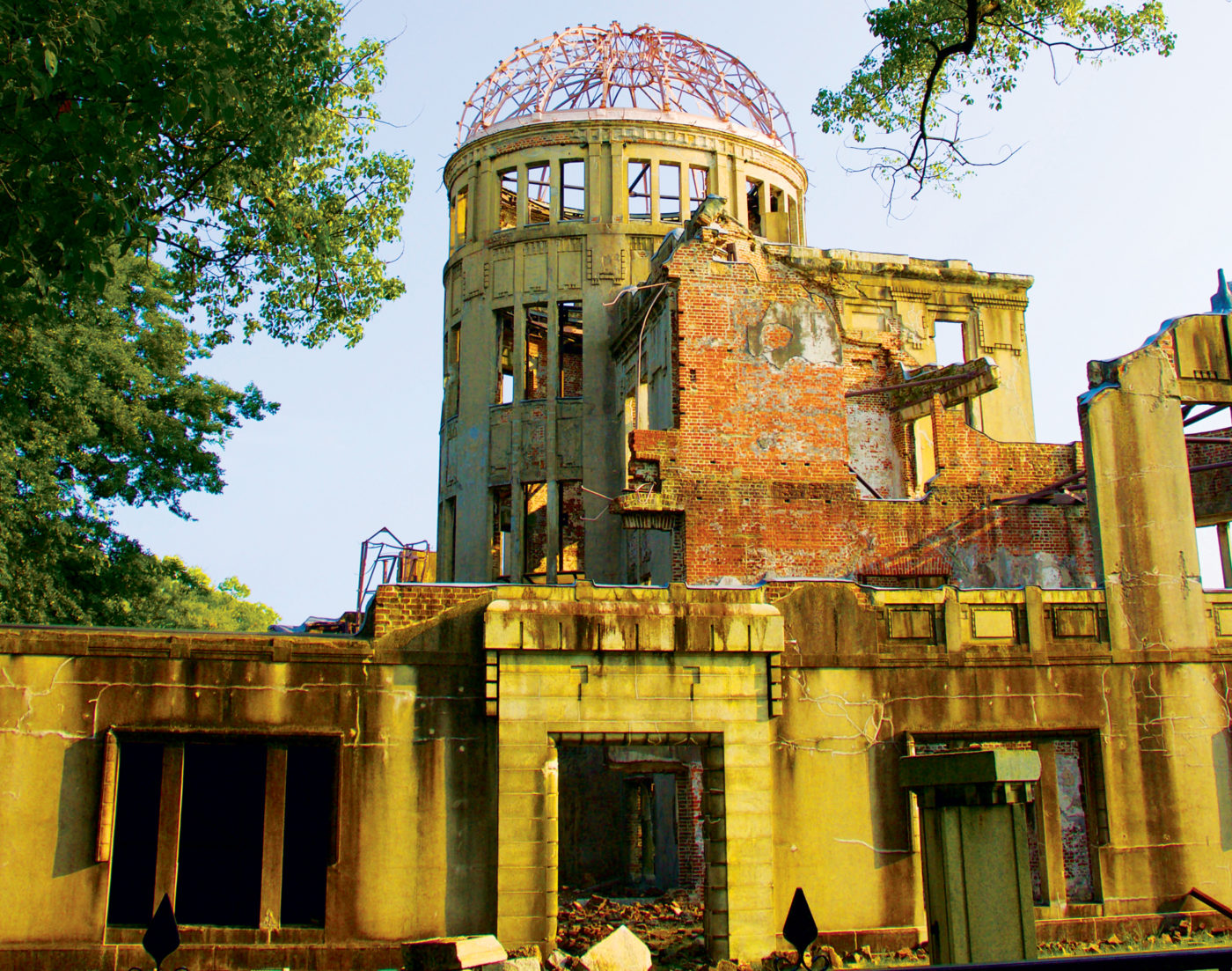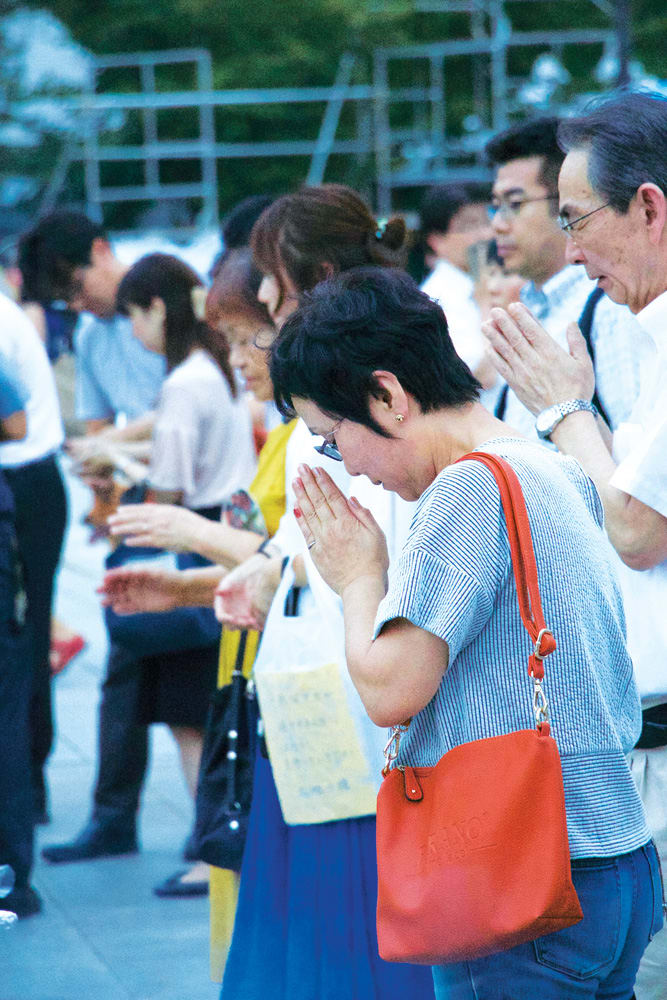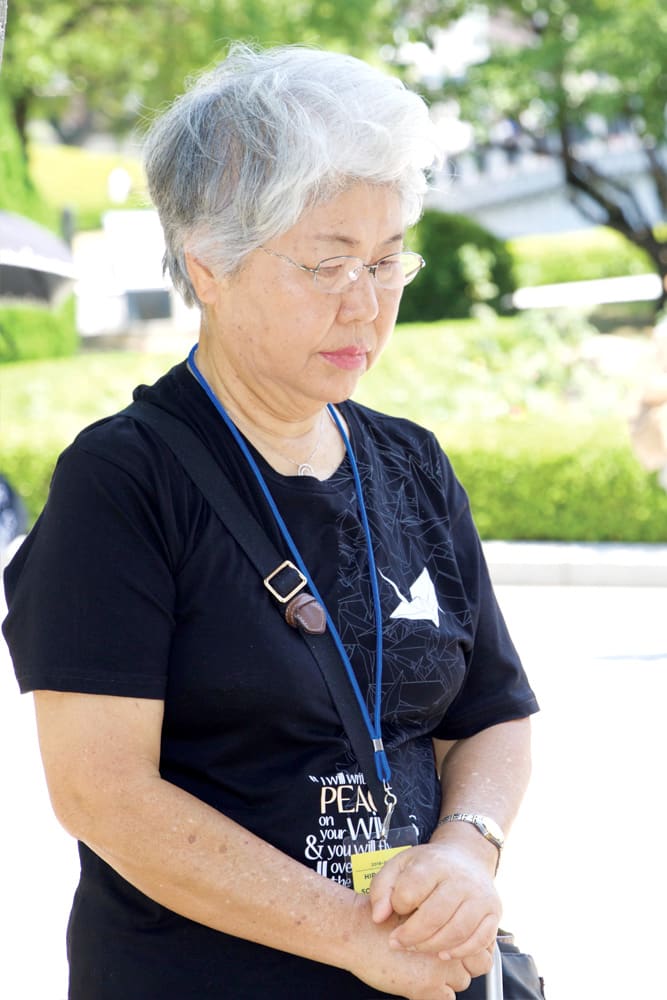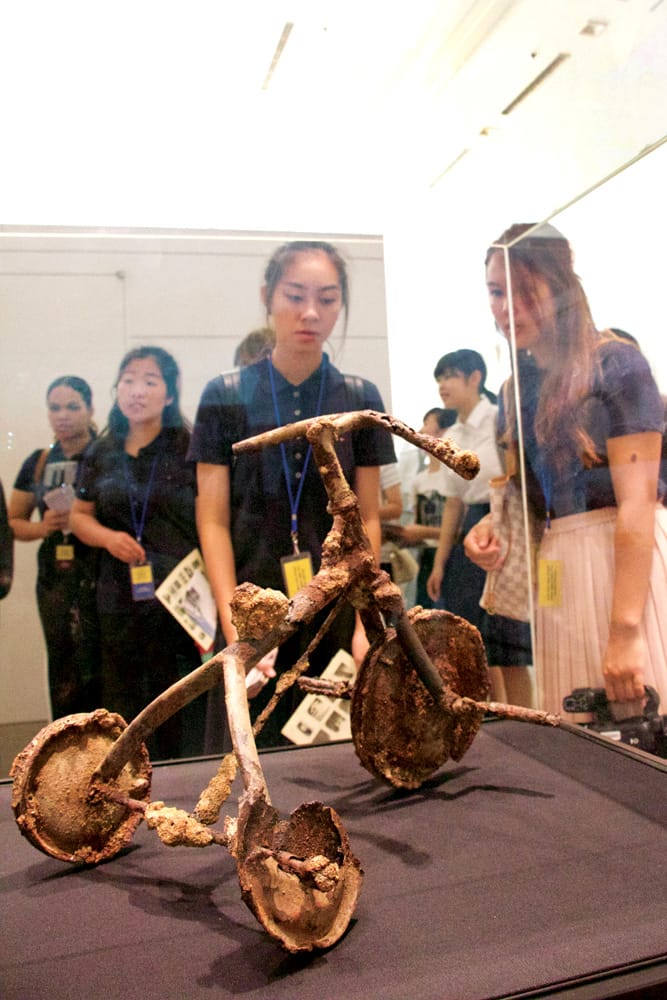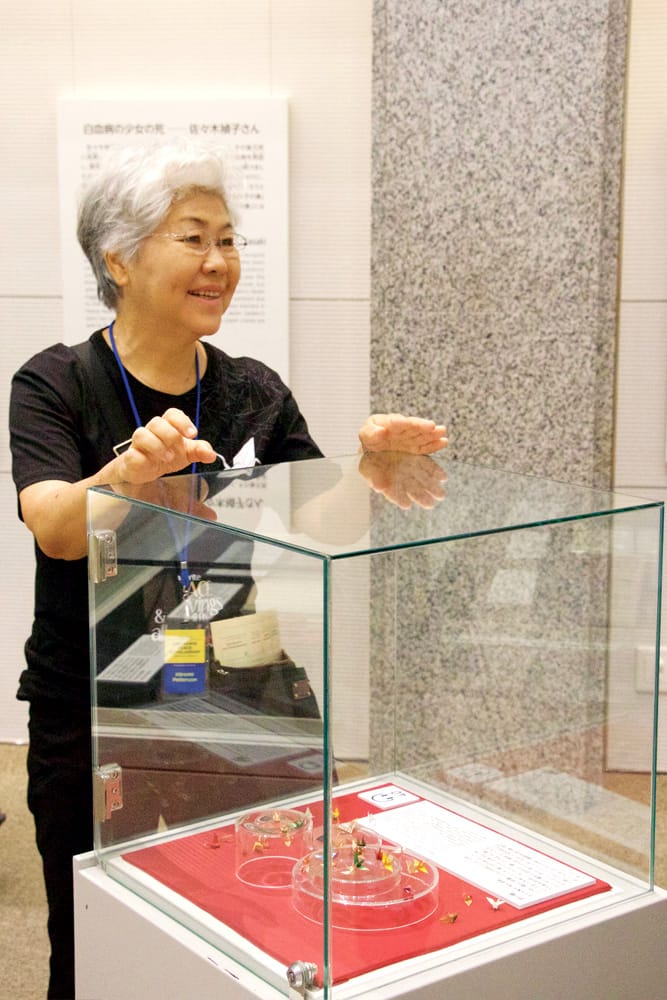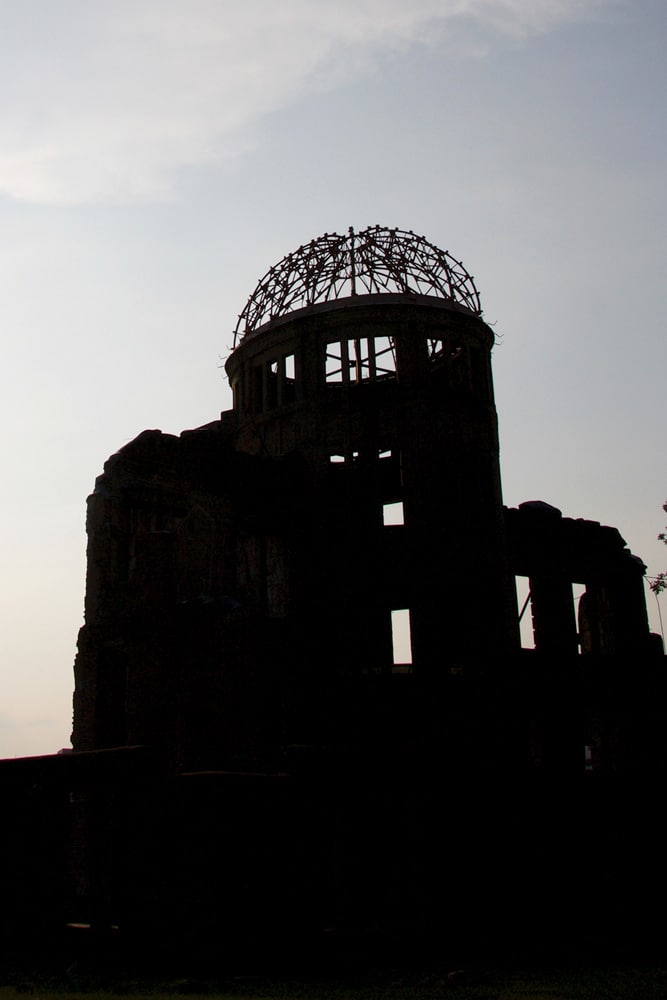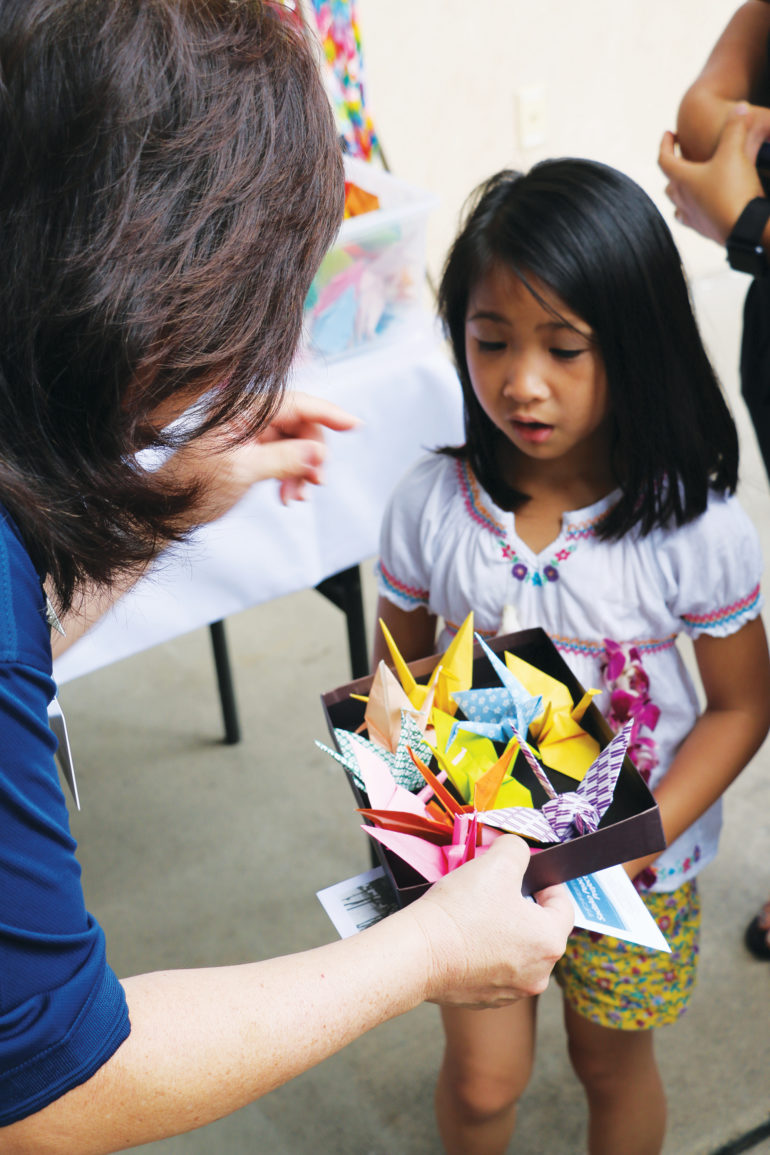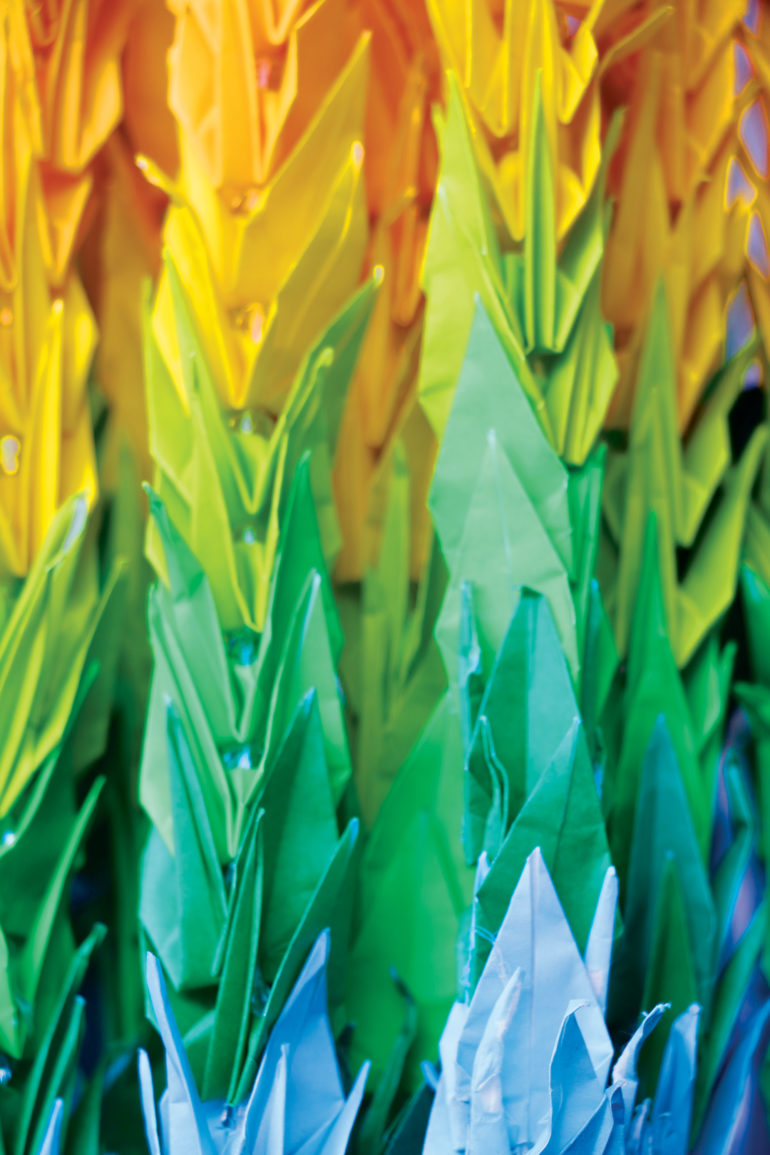Punahou’s Hiroshima Peace Scholarship Program Celebrates 10 Years
Photos and story by Scott Osborn ’94.
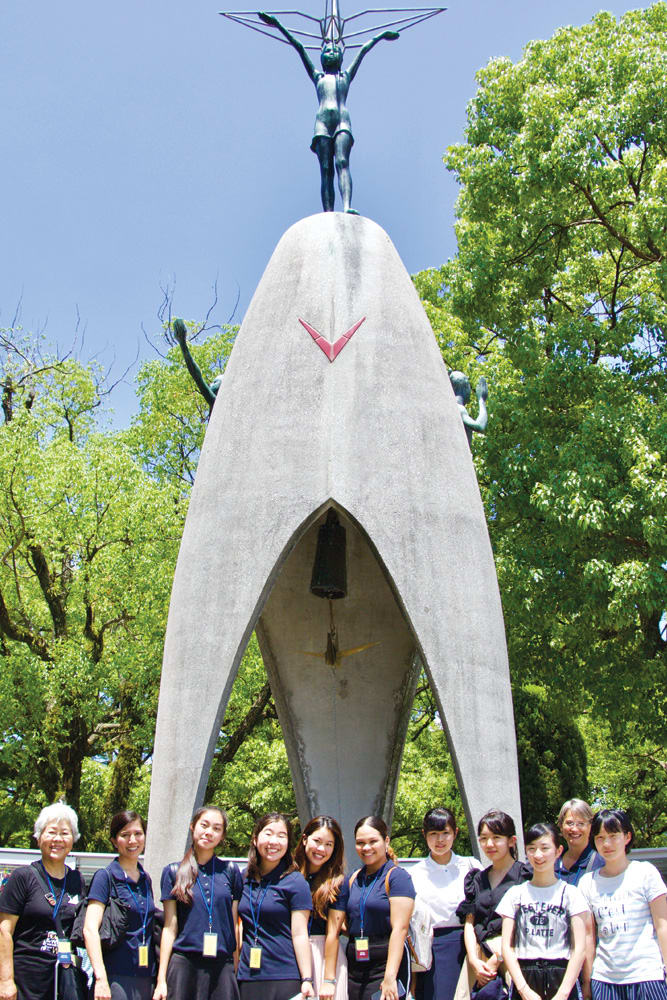
The blazing sun and suffocating humidity of summer in Japan greeted this year’s Hiroshima Peace Scholars on Aug. 1. Their arrival marked the beginning of an emotional nine days in Japan and the 10-year anniversary of the Hiroshima Peace Scholarship program, which was founded by retired Academy Japanese faculty, Hiromi Peterson.
Born in 1948, Peterson grew up in post-war Hiroshima listening to the stories of her parents and other atomic bomb survivors – referred to as hibakusha in Japanese. Hearing those stories forged a desire to spread awareness about nuclear disarmament and world peace, which she would fulfill many years later in Honolulu.
Peterson began teaching at Punahou in 1984. She quickly grew so frustrated with the Japanese textbook being used that she decided to write her own. Joined by her friend and colleague Naomi Hirano-Omizo in 1988, the duo embarked on a remarkable journey with the support of the other teachers in the Japanese Language Department: creating relevant material structured around situations one might encounter in the real world, such as ordering food in a Japanese restaurant, giving directions to tourists from Japan, or experiencing a homestay in Japan.
“I thought it would be a three- or four-year project,” laughs Hirano-Omizo, who still teaches at Punahou.
Materials were initially printed on campus but as word of the book spread, Peterson secured a publishing agreement. The first edition of “Adventures in Japanese” was published in 1998 and has since become the best-selling high-school Japanese language textbook series in America.
Neither Peterson nor Hirano-Omizo were comfortable with the idea of accepting royalties from the project, so they decided to donate the money back to Punahou by establishing the Adventures in Japanese endowed fund. Since its inception $1.6 million has been donated to the fund, and the money is used to support global education initiatives at the School. The endowed fund also helped Peterson to realize her dream and found the Hiroshima Peace Scholarship program together with Hirano-Omizo. “I realize that I can’t change governments, but I also know it is my duty to change what I can,” she says.
Building peace is not a difficult task. We are not without power, we fold our desire into paper cranes and give them to the world. Learning what happened 73 years ago and how the hibakusha feel, what we learn and feel in our hearts we will pass on.
Miori Shinkai (grade 6, Hiroshima City
Ushita Elementary School) and Yuhi Yonehiro (grade 6, Hiroshima City Itsukaichi-higashi Elementary School) as presented during the Peace Memorial Ceremony on Aug. 6, 2018.
In the past decade, the program has sent 25 students to Hiroshima. This year, for the first time, the program expanded to include students from Hawai‘i Department of Education high schools. Applications were solicited from schools that have students actively participating in the Pacific and Asian Affairs Council. Ultimately, two students from Farrington High School were awarded the scholarship.
“From the beginning I wanted the program to include other schools, but we didn’t have money and, maybe, we weren’t ready for it,” explains Peterson. “I hope we can include even more schools in the future because these types of programs should not just be for Punahou students.”
One of the first stops on the trip itinerary each year is visiting the Hiroshima Peace Memorial Museum. It is an emotional and visceral experience. Artifacts recovered after the bombing testify to the tragedy on the morning of Aug. 6, 1945, and graphic archival photos depict in gut-wrenching detail the impact that the initial blast and subsequent radiation exposure had on hibakusha, and explore the persistent and pernicious discrimination faced by hibakusha and their descendants decades afterward.
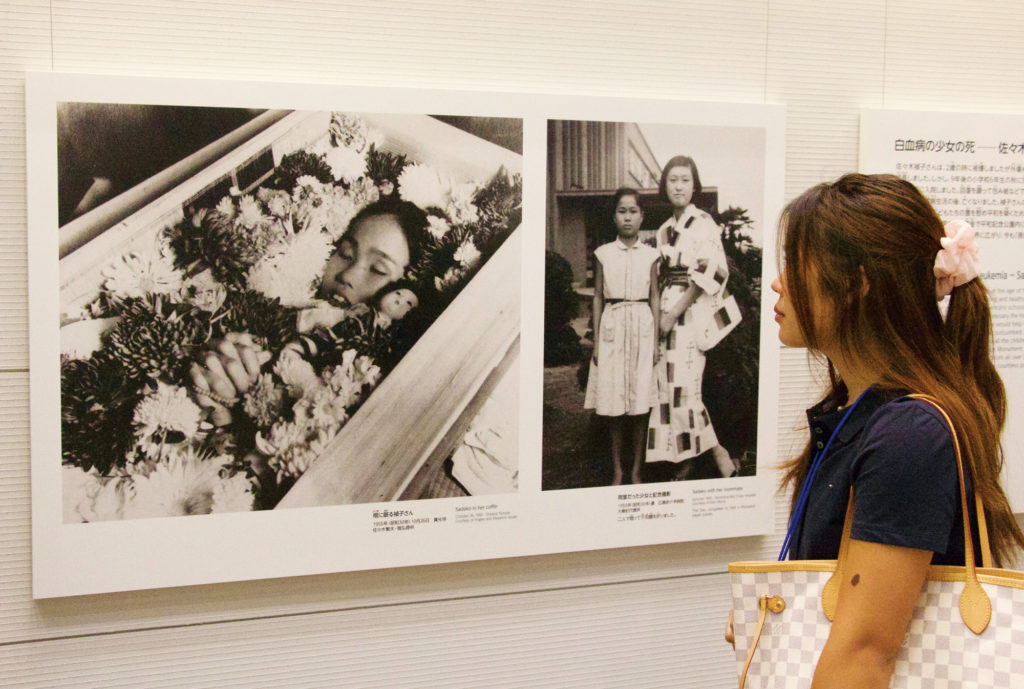
“There were so many heartbreaking and horrific stories from different individuals and how the atomic bomb affected their life or family; it was overwhelming,” recalled Eden Chun ’19.
2017 peace scholar Kevin Nguyen ’18 will never forget his tour of the museum, “At times I couldn’t believe some of the things I saw – it looked like a horror film.”
This year’s group followed their visit with a walk through Hiroshima Peace Memorial Park that ended at the ruins of the Hiroshima Prefectural Industrial Hall. Now known as the Genbaku (Atomic Bomb) Dome, the building was the only structure left standing near the bomb’s hypocenter after the blast. Its refusal to fall came to represent the spirit of the city and its people in the years after the war.
“To stand in the exact place where nearly 100,000 people died on a single day and where thousands more suffered horribly in the following days is a bone-chilling, eye-opening and heart-changing experience,” reflected Megan Kobayashi ’19.
During their time in Hiroshima, students had the opportunity to hear first-hand testimony from hibakusha, including a video Peterson’s parents recorded before they passed away. In the video, her father talks about the burns he received during the blast, and the constant effort it took to keep the maggots at bay while he healed. Another survivor, Keiko Ogura, told tales of bodies floating in the rivers and her father cremating hundreds of victims near the family’s house.
The core academic component of the program is participating in the Hiroshima Jogakuin High School Peace Forum. The forum brings together students from schools in Hiroshima and other prefectures in Japan to discuss strategies for promoting world peace, and preparation begins with rigorous research months beforehand. At the forum, students discuss these issues in small groups and come to a consensus before presenting their ideas to the larger group.

“The forum opened my eyes to how accepting, tolerant and open-minded we all need to be in order for there to be peace,” said Beigie Lam (Farrington ’19). “If future politicians could be like us and sit in a room with people extremely different from themselves, and just discuss what’s good to do – what’s right – then I would see more hope in a future of world peace.”
“Peace in the world begins with the face-to-face interactions we have toward each other,” added Kobayashi. “Individual tolerance and acceptance of those who differ from ourselves is the key to peace and I will try my best to live my life honoring what I have learned through this experience.”
Christina Hill ’15 was a peace scholar in 2014, and the experience changed her life.
“It inspired me to continue researching and learning about nuclear nonproliferation,” she says. That interest led her to participate in a month-long research trip to the Marshall Islands with Columbia University’s Center for Nuclear Studies, where she collected samples of sand to test for radioactivity. After that she went back to New York to write articles on nonproliferation for the center’s website.
Hill is currently a senior at Columbia University and she hopes to work for the State Department after graduation. She is also applying for a Fulbright Fellowship with the intention of researching nuclear nonproliferation initiatives from a humanitarian standpoint.
“Stories like that are why I started this program,” Peterson says proudly. “That’s why I cannot stop doing this. It is my mission.”
One Thousand Paper Cranes
Sadako Sasaki has become a symbol of the nuclear disarmament movement in Hiroshima. She was 2 years old at the time of the bombing and escaped outward harm on that fateful day. Radiation is not easily escaped however, and she was diagnosed with leukemia in the seventh grade. While in the hospital, she learned of a Japanese legend that says if a person folds 1,000 origami cranes they would be given a wish. She folded more than 1,000 cranes, but ultimately succumbed to her illness on Oct. 25, 1955.
Saddened by her death, Sasaki’s classmates raised funds to build a memorial to her and other child victims of the bomb. A statue of Sasaki holding a golden crane was unveiled in Hiroshima Peace Memorial Park in 1958 with the inscription, “This is our cry. This is our prayer. Peace in the world.”
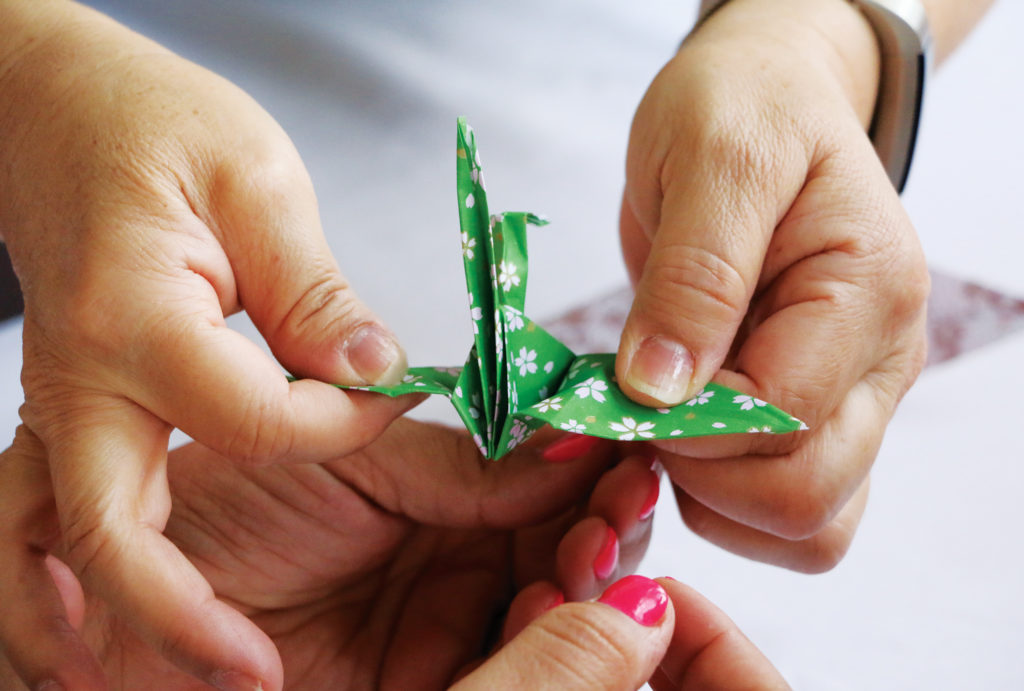
One of the cranes she folded is on display at the Pearl Harbor Visitor Center. Throughout the year, Punahou Japanese language students hold events at the center, where they share the message of peace by teaching visitors the story of Sasaki and how to fold their own cranes – an activity that the Hiroshima Peace Scholars participate in every year in the weeks leading up to the trip.
Hiroshima Peace Scholars also craft a senbazuru – 1,000 origami paper cranes held together by strings – and carry it to Hiroshima to place near Sasaki’s statue.

